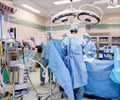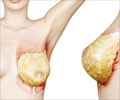The establishment of an acute care surgery service can help surgeons at academic medical centers provide more timely care to the growing number of patients
The establishment of an acute care surgery service can help surgeons at academic medical centers provide more timely care to the growing number of patients who are transferred from the emergency room or smaller hospitals and who require an immediate operation, according to a new study published in the October issue of the Journal of the American College of Surgeons.
Lack of access to high-quality acute surgical care is a growing problem in the United States due to numerous factors, including a shortage of surgeons and declining reimbursement associated with increasing numbers of uninsured patients. Further, general surgeons are increasingly subspecializing, resulting in difficulty providing expert care for emergency cases outside the realm of the surgeon's specialty. With an increased demand for surgical services, usually in the face of fewer resources, a new model is necessary to serve the needs of patients requiring nonscheduled, immediate surgical intervention."The results of this study suggest that an acute surgery service operating largely during daytime hours can provide more efficient emergency care without disrupting the treatment of patients undergoing scheduled operations," said Rebecca C. Britt, MD, FACS, assistant professor, department of surgery, Eastern Virginia Medical School (EVMS), Norfolk. "These findings argue for the establishment of dedicated acute surgical teams separate from trauma services."
The authors retrospectively reviewed a prospective database of 861 patients receiving consultations and procedures performed by an acute care surgery service at EVMS. The service was staffed by six board-certified critical care surgeons and two surgical residents. All emergency department, inpatient and transfer consultations for general surgery were directed to the acute surgery service. Trauma service was separate from the acute care surgery service. Data was reviewed for two time periods, prior to implementation and following implementation, from July 2006 to March 2008.
Of the 410 patients who had 500 operations, 72.8 percent were performed in the operating room (n=368) and 26.2 percent at the bedside (n=132). In the year before implementation of the acute surgery service, 55.4 percent of urgent and emergent procedures were performed between 7:30 a.m. and 5:30 p.m., compared with 70 percent after implementation (p=0.0002). Procedures performed after 5:30 p.m. decreased from 44.6 percent to 30 percent following implementation of the service.
Researchers said that the shift in operations from after hours to daytime hours was accomplished by assigning an attending surgeon to cover those procedures that could wait until daytime (for example, gallbladder removal), without compromising the emergency coverage for those patients who required immediate operations. This approach allowed operations to proceed as openings in the daily operating room schedule developed, rather than as add-on procedures performed at the end of the day or into the night.
The most common cases that required treatment by the acute surgery service were respiratory failure and malnutrition (n=130), soft-tissue infection (n=115), abdominal pain (n=97), biliary complications (n=94) and bowel obstruction (n=78). The most common operations performed included creating a surgical opening in the trachea or stomach for insertion of tubes, or both (n=125); incision and drainage (n=61); gallbladder removal (n=53); and complex abdominal wound care (n=43).
Advertisement
Source-Eurekalert
RAS









